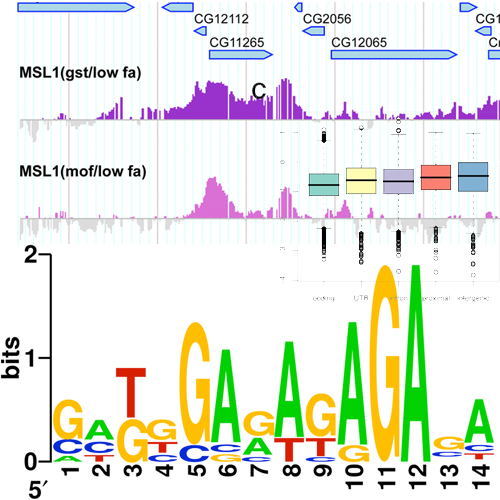The Chromosomal High-Affinity Binding Sites for the Drosophila Dosage Compensation Complex
12-Dec-2008
PLOS Genetics, 2008, doi:10.1371/journal.pgen.1000302, published on 12.12.2008
PLOS genetics, online article
Dosage compensation in male Drosophila relies on the X chromosome–specific recruitment of a chromatin-modifying machinery, the dosage compensation complex (DCC). The principles that assure selective targeting of the DCC are unknown. According to a prevalent model, X chromosome targeting is initiated by recruitment of the DCC core components, MSL1 and MSL2, to a limited number of so-called ‘‘high-affinity sites’’ (HAS). Only very few such sites are known at the DNA sequence level, which has precluded the definition of DCC targeting principles. Combining RNA interference against DCC subunits, limited crosslinking, and chromatin immunoprecipitation coupled to probing highresolution DNA microarrays, we identified a set of 131 HAS for MSL1 and MSL2 and confirmed their properties by various means. The HAS sites are distributed all over the X chromosome and are functionally important, since the extent of dosage compensation of a given gene and its proximity to a HAS are positively correlated. The sites are mainly located on noncoding parts of genes and predominantly map to regions that are devoid of nucleosomes. In contrast, the bulk of DCC binding is in coding regions and is marked by histone H3K36 methylation. Within the HAS, repetitive DNA sequences mainly based on GA and CA dinucleotides are enriched. Interestingly, DCC subcomplexes bind a small number of autosomal locations with similar features.











